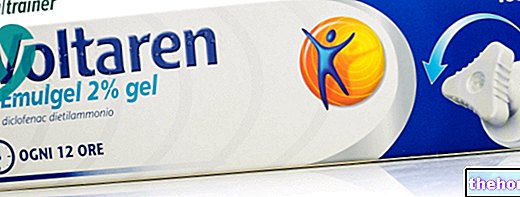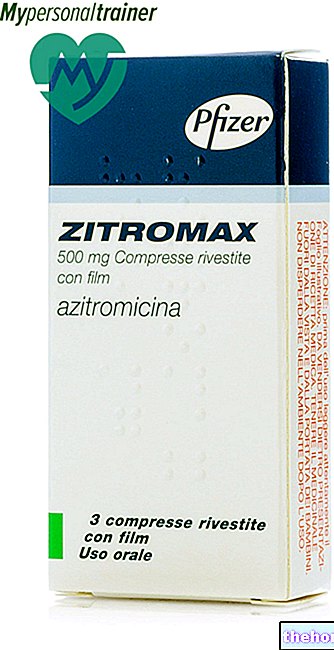Active ingredients: Doxycycline
MIRACLIN 100 mg tablets
Indications Why is Miraclin used? What is it for?
PHARMACOTHERAPEUTIC CATEGORY
Antibacterials for systemic use.
THERAPEUTIC INDICATIONS
Infections with Gram-positive and Gram-negative germs sensitive to tetracyclines
Contraindications When Miraclin should not be used
Hypersensitivity to tetracyclines or to any of the excipients.
Obstructive disorders of the esophagus, such as narrowing or achalasia.
The product is not indicated in pregnant women and children up to twelve years of age (see Special warnings).
Precautions for use What you need to know before taking Miraclin
It is recommended that all patients taking doxycycline:
- Avoid excessive exposure to sunlight or artificial UV rays during treatment, and discontinue therapy if phototoxic reactions (eg skin rashes) occur. Use partial or full sunscreen.
- Take doxycycline with plenty of water to reduce the risk of esophageal irritation and ulcers.
- Know that the absorption of tetracyclines is reduced when bismuth subsalicylate is also taken.
- Knowing that doxycycline therapy may increase the incidence of vaginal candidiasis.
Hepatic impairment
The administration of doxycycline in high doses and for periods of time longer than two weeks can cause disturbances in liver function which should therefore be monitored, discontinuing the treatment in case of abnormal reactions.
Renal impairment
The excretion of doxycycline is not modified in subjects with impaired renal function; however, in such patients it is advisable to proceed with caution, possibly reducing the amount of doses.
In subjects with renal insufficiency, even normal doses of tetracycline can cause an accumulation in the circulation with possible liver damage; in these cases it is necessary to adopt the dosage according to the degree of renal function, resorting, if necessary, to checks of blood levels (which should never exceed 15 mcg / ml) and liver function. It should also be kept in mind that tetracyclines exert an "antianabolic action which can aggravate states of renal insufficiency.
Esophagitis
Cases of oesophagitis and oesophageal ulcers, sometimes severe, have been reported.
Patients are advised to take the drug with plenty of water, even with meals, to remain upright for at least one hour after taking the medicine and not to take the medicine before going to bed.
If symptoms such as difficulty in swallowing or retrosternal pain occur during therapy, the drug should be immediately interrupted and evaluated with the attending physician for the opportunity to carry out instrumental investigations. In the treatment of patients suffering from established esophageal reflux, other therapeutic alternatives should also be considered.
Gonococcal infections
In the treatment of gonococcal infections, attention should be paid to the risk of masking the manifestations of coexisting syphilis; in these cases it is advisable to carry out serological checks for at least 4 months.
Myasthenia Grave
Doxycycline should be used with caution in patients with myasthenia gravis.
Long-term treatment cycles require periodic checks of blood count and renal and hepatic function.
Interactions Which drugs or foods can change the effect of Miraclin
Tell your doctor or pharmacist if you are taking or have recently taken any other medicines, including those obtained without a prescription.
Oral absorption of tetracyclines is reduced by:
- antacid preparations containing aluminum, calcium and magnesium,
- dairy or milk based foods,
- products containing iron salts and preparations containing zinc and bismuth orally.
It is therefore advisable to avoid simultaneous intakes and to distance the administration of the aforementioned products from that of tetracyclines (at least 2 hours, if possible).
There have been rare reports in the literature of increased plasma concentrations of lithium, methotrexate, digoxin and ergot derivatives following concomitant administration of tetracyclines.
Oral anticoagulants
Prolongation of prothrombin time has been reported in patients taking warfarin and doxycycline. Since tetracyclines can depress prothrombin activity, it may be necessary to reduce the dosages of anticoagulants taken at the same time.
Penicillins
The association of tetracyclines, including doxycycline, with penicillins should be avoided, due to the possible occurrence of interference between their respective antibacterial activities.
Anticonvulsants
Barbiturates (phenobarbital, primidone), carbamazepine and phenytoin reduce the half-life of doxycycline.
Alcoholic beverages
The half-life of doxycycline can be shortened by the simultaneous intake of alcoholic beverages.
Oral contraceptives
Taking tetracyclines may decrease the effectiveness of oral contraceptive treatments. Some cases of pregnancy or intermenstrual blood loss have been attributed to the concomitant use of tetracyclines with oral contraceptives.
Cyclosporine
Doxycycline may increase cyclosporine plasma concentrations. Any co-administration, therefore, must be carefully monitored.
Interactions related to other medicinal products
Concomitant use not recommended:
Systemic retinoids
Co-administration with tetracyclines increases the risk of developing benign intracranial hypertension (a reversible increase in intracranial pressure).
Methoxyflurane
Co-administration with tetracyclines has resulted in fatal case reports of nephrotoxicity.
Interactions with laboratory investigations
False increases in urinary catecholamine levels may occur due to interference with the fluorescence test.
Warnings It is important to know that:
Superinfections
As with other antibiotics, treatment with tetracyclines can result in superinfections with resistant bacterial agents or fungi. The possibility of resistant staphylococcal enterocolitis should be kept in mind. Constant monitoring of the patient is essential. If a resistant organism appears, treatment should be discontinued and appropriate therapy instituted.
Clostridium difficile associated diarrhea (CDAD)
Cases of Clostridium difficile associated diarrhea (CDAD) have been reported with the use of nearly all antibiotics, including doxycycline, and may range in severity from mild diarrhea to fatal colitis. Treatment with antibiotics alters normal flora. colon and leads to an overgrowth of C. difficile.
C. difficile produces toxins A and B which contribute to the development of diarrhea. Strains of C. difficile that produce excess toxins cause increased morbidity and mortality rates, as these infections are typically refractory to antibacterial therapy and often require colectomy. The possibility of C. difficile-associated diarrhea should be considered in all patients who present with diarrhea following antibiotic treatment. A careful medical history is also required as cases of C. difficile associated diarrhea have been reported even more than two months after antibiotic administration.
Pediatric population
Doxycycline, like other tetracyclines, gives rise to a stable calcium complex in the forming bone tissue. A reduction in fibula growth rate was observed in premature babies who were given oral tetracycline at a dose of 25 mg / kg every six hours. This reaction proved to be reversible upon discontinuation of treatment.
The use of tetracyclines during the period of tooth formation (second half of pregnancy, neonatal period and early childhood up to 12 years of age) can cause permanent dental pigmentation (yellow-brown); this occurs mainly after use prolonged use of these antibiotics, but has also been observed after short but repeated treatment periods. Enamel hypoplasia has also been reported, so doxycycline should not be given to this patient group unless other drugs are available or may be ineffective or contraindicated.
General
Cases of domed fontanelles in neonates and benign intracranial hypertension in adults have been reported with full dose intake. These effects resolved rapidly upon discontinuation of treatment.
Pregnancy and breastfeeding:
No data are available on the use of doxycycline during pregnancy. Use in pregnant women is contraindicated (see sections "Contraindications" and "Special warnings": Pediatric population).
Doxycycline should not be taken during breastfeeding as it passes into breast milk of lactating women as well as any tetracycline, including doxycycline. Driving and using machines There is no evidence to indicate effects of doxycycline on the ability to drive or drive. to use machinery.
KEEP OUT OF THE REACH AND SIGHT OF CHILDREN
Dosage and method of use How to use Miraclin: Dosage
2 tablets at once on the first day of treatment, one tablet in the following days.
In case of severe infections, strictly follow the doctor's instructions.
In all group A beta hemolytic streptococcal infections, treatment should last no less than ten days.
Each dose should be taken during meals with large quantities of water (one full glass).
The patient should take the medicine in an upright position at least one hour before bedtime (see Precautions for use).
The duration of the treatment will depend on the evolution of the infection: it is however advisable not to suspend therapy until after the fever and clinical symptoms have disappeared.
In order to obtain maximum therapeutic safety, it will be advisable, in any case, to carry out an antibiogram to ensure that the strain of germs responsible for the condition to be treated is sensitive to the action of tetracyclines.
Overdose What to do if you have taken too much Miraclin
In case of accidental intake of an excessive dose of the medicine, notify your doctor immediately or go to the nearest hospital.
In case of overdose, practice gastrolusis. Hemodialysis is not indicated in the event of an overdose as it does not change the residence time of the drug in the blood.
For any appropriate clarification on the use of the medicine, contact your doctor or pharmacist.
Side Effects What are the side effects of Miraclin
Like all medicines, MIRACLIN can cause side effects, although not everybody gets them.
The following side effects have been observed in patients taking tetracyclines, including doxycycline
CIOMS III frequency categories: Very Common 1/10 (10%), Common 1/100 to 1/10 (1% and
Compliance with the instructions contained in this leaflet reduces the risk of undesirable effects.
Reporting of side effects
If you get any side effects, talk to your doctor or pharmacist. This includes any possible side effects not listed in this leaflet. Side effects can also be reported directly via the national reporting system at www.agenziafarmaco.gov.it/it/responsabili. By reporting side effects you can help provide more information on the safety of this medicine.
Expiry and Retention
Expiry: See the expiry date printed on the package.
The expiry date refers to the product in intact packaging, correctly stored.
Warning: do not use the medicine after the expiry date shown on the package.
For the expiry date, refer to the one shown on the package.
Store at a temperature not exceeding 25 ° C
Medicines should not be disposed of via wastewater or household waste. Ask your pharmacist how to throw away medicines you no longer use. This will help protect the environment.
Composition and pharmaceutical form
COMPOSITION
Each tablet contains:
Active ingredient: doxycycline hyclate 115.4 mg equivalent to doxycycline anhydrous base 100 mg.
Excipients: microcrystalline cellulose, dibasic calcium phosphate, crospovidone, magnesium stearate, corn starch, sodium carboxymethyl starch, talc, sodium lauryl sulfate, colloidal silica. FORM
PHARMACEUTICAL AND CONTENT
100 mg Tablets Pack of 10 tablets
Source Package Leaflet: AIFA (Italian Medicines Agency). Content published in January 2016. The information present may not be up-to-date.
To have access to the most up-to-date version, it is advisable to access the AIFA (Italian Medicines Agency) website. Disclaimer and useful information.
















.jpg)











